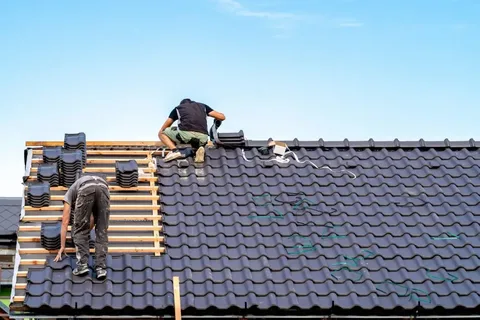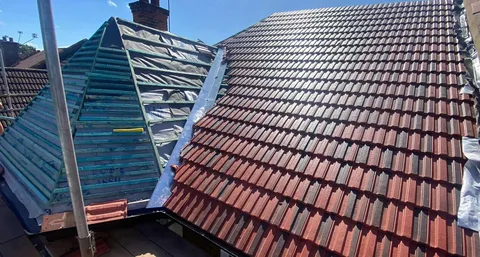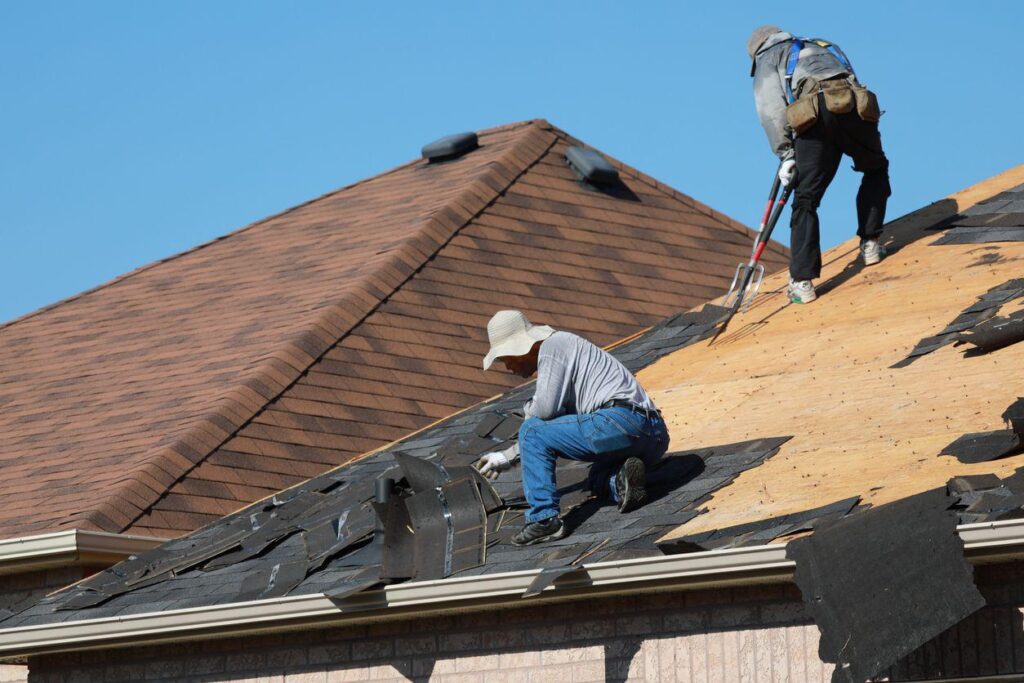You have probably clicked here because you are stressed about your constantly increasing energy bills. Let’s just say, you are not alone! Many homeowners spend a lot of money heating and cooling their homes without realizing that their roof plays a big role in energy efficiency. You are mistaken if you think your roof’s only job is to protect your house from rain and wind. The cool part is that it can actually help you save money every month. This blog is all about how the right roof can make your home more comfortable and your energy bills smaller.
How Old/Poor Roof Installation Can Waste Energy
If your home has a roof that was installed in your great-grandfather’s time, it may be working against you. A poor roof installation can allow heat to escape in winter and let unwanted heat in during summer. It is as simple as that. Your heating and cooling systems must work harder to combat your roof issues. This mania leads to higher energy bills. Think of your roof like a blanket for your home. A torn or poorly fitted blanket won’t keep you warm in winter or cool in summer. Slowly, that constant energy loss adds up to big costs and extra strain on your HVAC system.
New Roof Installation Perks
We have established why new roof installation becomes necessary when your old roof has aged or is poorly installed. It is time we talk about some of the many perks of a new roof. Come along as we explore the benefits:
Helps Control Temperature
A good roof installation creates a solid barrier between your living space and the outside weather. Roofers use layers of materials (insulation → underlayment → shingles) to trap winter’s heat and reflect summer sunlight.
Choosing the right roofing material for your climate makes a big difference in how much energy you use. Let us elaborate:
- Light-colored roofing materials reflect more sunlight. They keep your home cooler when it is hot outside.
- Darker roofs can help absorb warmth in colder areas.
The Secret Weapon of Energy Efficiency
After a professional roof installation comes high-quality insulation. It is honestly one of the best ways to lower energy costs. Insulation acts like a barrier that keeps warm air from escaping through your attic during the winter. It also stops hot air from entering in the summer. If you don’t have insulation, your HVAC system will just work overtime to maintain a comfortable temperature. But with a well-insulated roof? Your home can stay cozy naturally.
Ventilation Matters More Than You Think
Another key part of efficient roof installation is good ventilation. A roof with poor airflow can trap heat in your attic. That can cause temperatures to rise dramatically in summer. Trapped heat can seep into your living spaces and force your air conditioner to work harder. Proper roof vents balance your home’s temperature. It is such a simple but powerful way to prevent energy waste. Not to mention, it also extends the life of your roof.
Energy-Efficient Roofing Materials
Today’s roofing materials are manufactured with energy savings in mind. The right choice depends on your location and budget. Every energy-efficient material helps lower utility costs in one way or another.
Homeowners, during roof installation, can choose from options like:
| ROOFING | WHY IT MATTERS |
| Cool Roofs | Reflect more sunlight and absorb less heat. It helps reduce indoor temperatures. |
| Metal Roofs | Reflects sunlight effectively. Lasts for decades with minimal maintenance. |
| Asphalt Shingles with Reflective Coating | Affordable and energy-efficient for most climates |
Sealing and Leak Prevention
Even small leaks or cracks in your roof can allow air to escape. That is why professional roof installation includes sealing edges, flashing, and joints to prevent leaks and drafts. It is like making sure your house has no “energy leaks.” A properly sealed roof keeps the temperature consistent and bills lower!
Long-Term Savings and Environmental Benefits
A well-installed and energy-efficient roof is also better for the planet. When your home uses less electricity or gas for heating and cooling, it reduces greenhouse gas emissions. That means you are saving energy and helping the environment.
Plus, because your HVAC system does not have to work as hard. That means fewer repairs, fewer replacements, and even more savings in the long run.
Conclusion
Your roof can actually help control your energy bills. Professional installation is a smart move that pays for itself over time. You will be able to enjoy lower utility bills because of a more efficient home with a new roof. The next time you think about saving energy, don’t just look at your thermostat. Look up! The right roof installation might be the best energy-saving upgrade your home ever gets.
FAQs
What type of roof is most energy efficient?
Metal roofing is the most energy-efficient, especially when coated with light-colored or emissive paint. TPO single-ply membranes or a green roof are also top contenders.
What’s a good age for a roof?
The average lifespan for an asphalt shingle roof is 20 to 25 years.
What is the best time of year to replace your roof?
The best time is late spring or early fall when temperatures are moderate.
What does a bad roof look like?
A bad roof has missing or cracked shingles, visible granule loss, algae stains, or signs of sagging between the rafters.
What is the weakest part of a roof?
The weakest parts of a roof are roof valleys, flashing around chimneys and skylights, and eaves, due to concentrated water runoff and exposure to weather.



